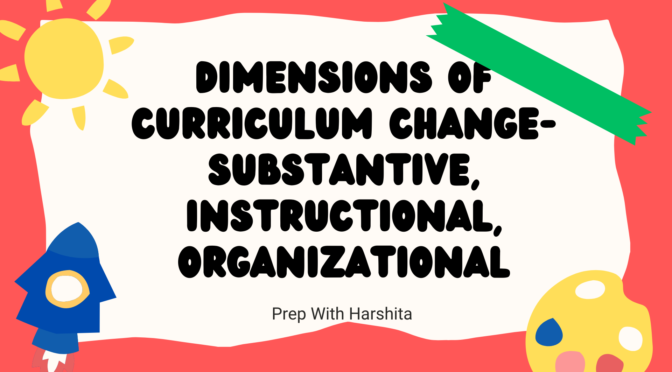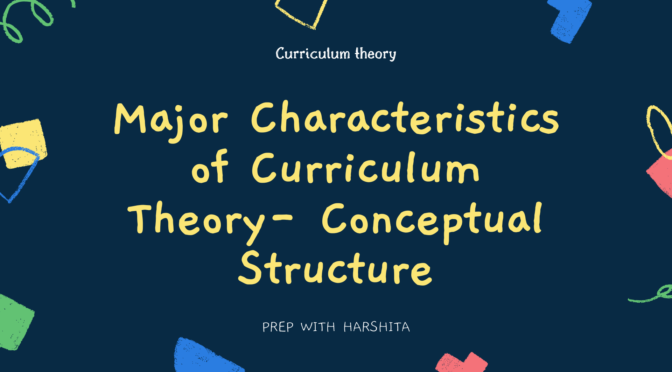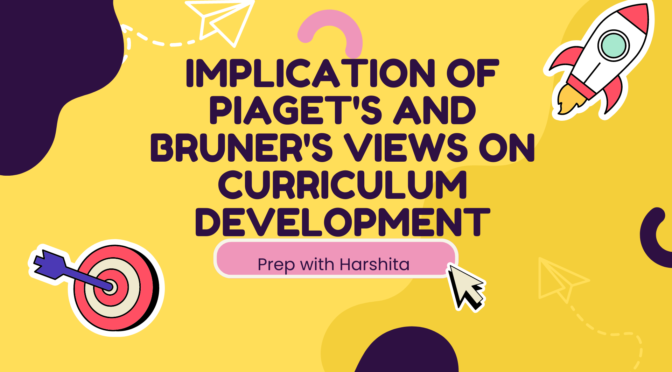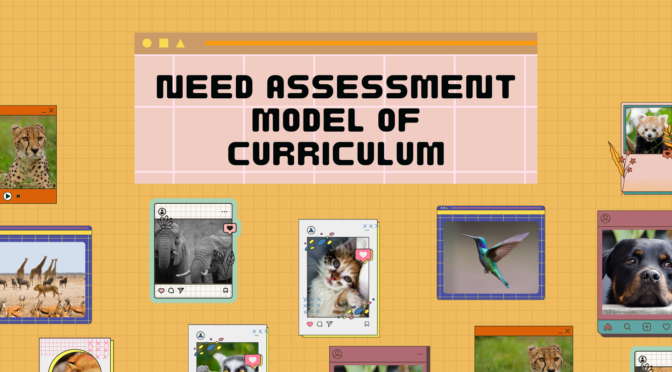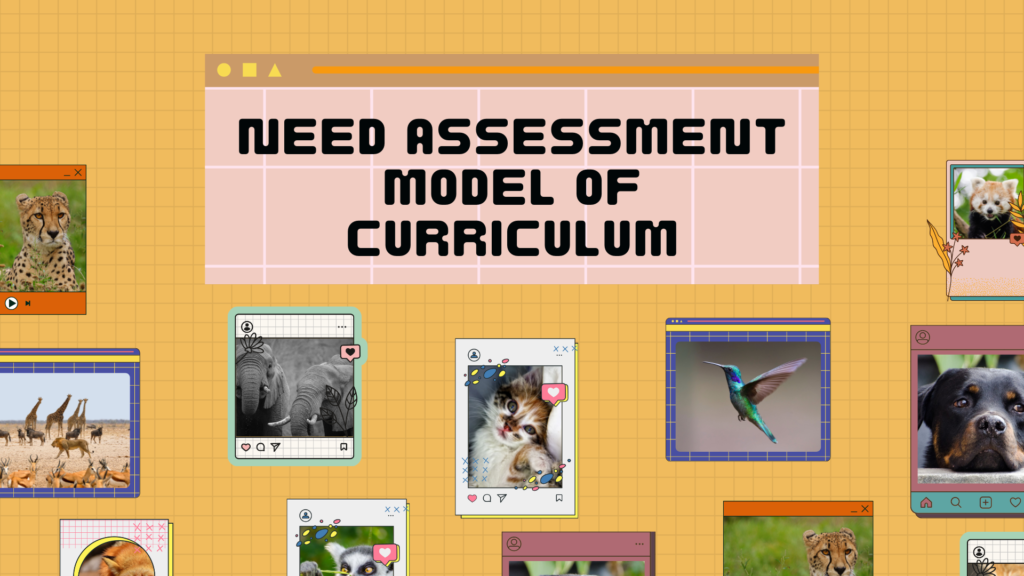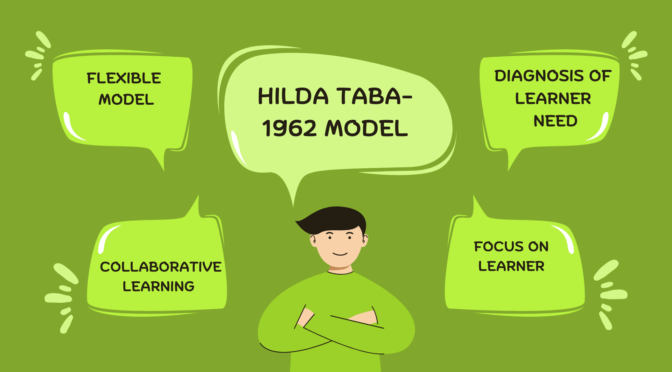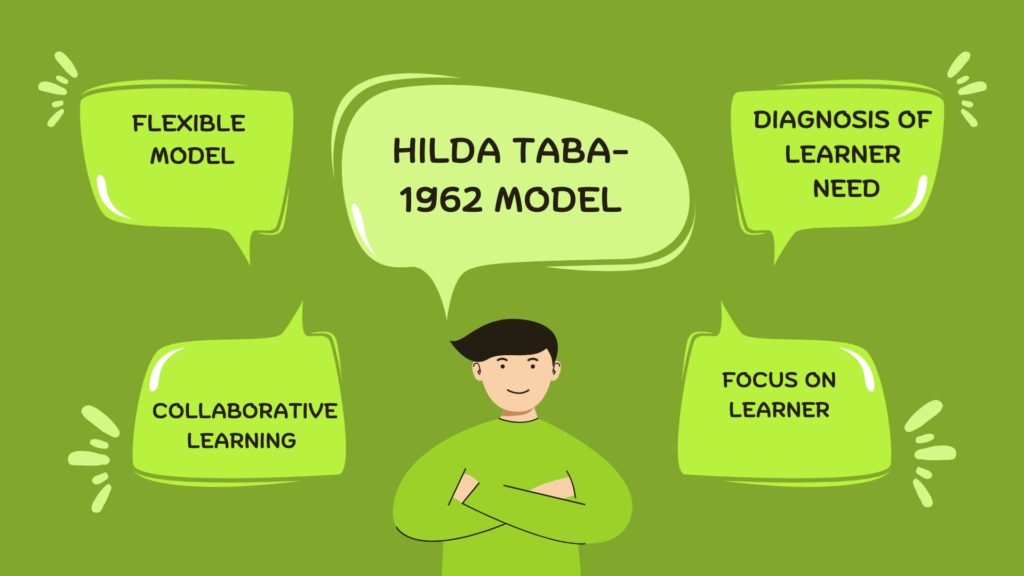Dimensions of Curriculum change are Substantive, Instructional, and Organizational.
Substantive
One important dimension of curriculum change is the substantive dimension. This refers to changes in the actual content of the curriculum, including the knowledge, skills, and attitudes that students are expected to learn.
Substantive changes may be necessary for the discoveries or changes in the field, to address new social or global issues, or according to the requirement.
Some examples of substantive changes that can be made to a curriculum include:
- Integrating new subject areas or topics: As new fields of study emerge, or as existing fields evolve, the curriculum may need to be updated. For example, a curriculum in computer science may need to be updated to include new programming languages or emerging technologies.
- Revising learning objectives: Curriculum change may involve revising or updating the objectives to better reflect changing societal needs or workforce demands.
- Updating content: Curriculum change may involve updating the content of the curriculum to reflect new research or developments in the field. For example, a history curriculum may need to be updated to reflect new perspectives on past events.
- Addressing emerging social or global issues: Curriculum change may also be driven by a need to address emerging social or global issues. For example, a curriculum on environmental science may need to be updated to reflect the latest research on climate change, or a health education curriculum may need to address emerging public health concerns.
Another important dimension of curriculum change is the instructional dimension. This dimension refers to changes in the way that the curriculum is delivered to students, including changes in teaching methods, strategies, and resources.
Some examples of instructional changes that may be made to a curriculum include:
- Adopting new teaching methods or strategies: Curriculum change may involve adopting new teaching methods or strategies that are better suited to the learning needs of students. For example, a math curriculum may incorporate more hands-on activities or group work to engage students effectively.
- Incorporating new technologies: Instructional changes may involve incorporating new technologies to support teaching and learning. For example, a language curriculum may use language learning apps or online resources to help students practice their language skills.
- Providing additional resources or support: Curriculum change may involve providing additional resources or support to students to help them succeed.
- Redesigning assessments: Instructional changes may also involve redesigning assessments to better align with learning objectives and to provide more meaningful feedback to students.
- Fostering student-centered learning: Instructional changes may also involve fostering student-centered learning, which places students at the center of the learning process and encourages them to take ownership of their own learning. For example, a social studies curriculum may use project-based learning or inquiry-based learning to encourage students to explore their own interests and develop critical thinking skills.
The organizational dimension of curriculum change refers to changes in the structures, systems, and processes used to implement the curriculum. This dimension is critical because it determines how the curriculum is implemented and the extent to which it can be sustained over time. Organizational changes may be necessary to ensure that the curriculum is effectively implemented and achieves its intended goals.
Some examples of organizational changes that may be made to a curriculum include:
- Aligning resources: Curriculum change may involve aligning resources, such as staffing, funding, and facilities, to support the implementation of the curriculum. For example, a science curriculum may require additional laboratory space or equipment, and schools may need to allocate resources to support these needs.
- Providing professional development: Curriculum change may require providing professional development opportunities to teachers to help them effectively implement the new curriculum. This may include training on new teaching methods or new technology.
- Changing schedules or structures: Curriculum change may require changes to schedules or structures to better support the implementation of the new curriculum. For example, a language curriculum may require longer class periods or more frequent language practice sessions, and schools may need to adjust their schedules to accommodate these needs.
- Establishing communication channels: Curriculum change need effective communication channels so that stakeholders are informed and engaged in the change process. This may include regular meetings with teachers, parents, and community members to provide updates and gather feedback.
- Implementing monitoring and evaluation systems: Curriculum change may require implementing monitoring and evaluation systems to assess the effectiveness of the new curriculum and to identify areas for improvement. This may include collecting data on student outcomes, teacher performance, and other indicators to ensure that the curriculum is achieving its intended goals.


